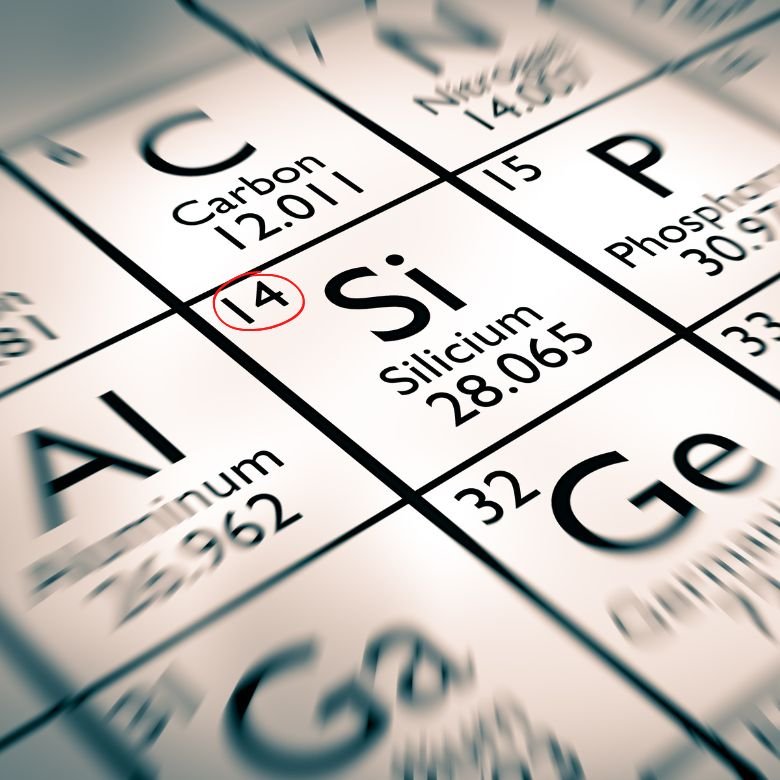Chemistry is a field of science which, through the knowledge of elementary values defining chemical elements, allows us to predict their properties and behaviour in chemical compounds. This knowledge also helps us discover new chemical forms and to better understand the fundaments of the world of nature. One of these basics is the atomic number of elements. It not only defines their place in the periodic table but also informs us of the number of electrons which then directly interact with other molecules.

Composition of the atomic nucleus: atomic number and mass number
To understand the concepts of atomic number and mass number of elements, we must first learn the principal information about atoms. The structure of an atom is sometimes described as a planetary system. In the centre, we have a positively charged atomic nucleus, which concentrates virtually the whole mass of the atom. Outside the nucleus, there are negatively charged electrons revolving around it. The nucleus attracts them with electrostatic forces. The electrons, particularly those located at the most distant shell (valence shell), determine many properties of the atom.
Atomic number – what you should know:
- the atomic number and mass number determine the composition of the atomic nucleus.
- atomic number is the number of positive elementary charges in the atomic nucleus. It is designated with the letter Z and indicated in the lower left corner of the chemical compound’s symbol.
- the atomic number tells us the number of electrons revolving around the nucleus, as it is equal to the number of positive protons in an atom’s nucleus (an atom is electrically neutral). Once we know these values, we can establish the chemical element we are dealing with.
- A chemical element is defined as a substance containing atoms all of which have the same atomic number.
Isotopes
The concepts of atomic number and mass number of chemical elements are often problematic. Although both concepts have clear definitions, they are often confused. This implies, for instance, an erroneous definition of other issues concerning chemical elements, as in the case of isotopes. It is worth keeping in mind that isotopes vary in the value of mass number (the number of nucleons, that is to say, the total of neutrons and protons), while their atomic number is constant.
Isotopes, defined as variants of a specific chemical element, differ in their atomic mass. Thus the variants have the same nuclear charge (an identical number of protons) and the same number of electrons revolving around it. A clear difference between isotopes is their atomic mass. This is due to the fact that the atomic nuclei of the same element contain different numbers of neutrons. The atoms of each isotope are called nuclides.

Atomic number and the position of a chemical element in the periodic table
The value of a chemical element’s atomic number is strongly correlated with its position in the periodic table. Elements are arranged by ascending atomic number, from left to right, in periods. When we analyse the position of each element in the table, we can see that the first period includes hydrogen and helium, whose atomic numbers are 1 and 2, respectively. The second period contains two elements from groups 1 and 2, and then from groups 13, 14, 15, 16, 17 and 18. This analogy can be observed in following periods of the periodic table of elements.
What are the lowest and highest atomic numbers?
The lowest atomic number is that of hydrogen, which equals 1. Number is 2 for helium, 3 for lithium, and so forth.
The element known today to have the highest atomic number is the element oganesson, with an atomic number of 118. The first atoms of oganesson were observed in 2002 by a team headed by Yuri Oganessian. Another observation of the oganesson took place in 2006, but was not considered credible by the IUPAC. However, it was approved as late as in 2015.
Elements such as oganesson are examples of superheavy elements. Their nuclei contain a lot of protons (they feature high atomic numbers). Oganesson does not exist in the Earth’s crust; it may only exist for a short time in strictly controlled conditions.
Scientists are continually troubled by the question of whether it is possible to produce even heavier elements, and where they could be positioned in the periodic table. In 1969, they even proposed the addition of an eighth period to the periodic table. It could include those elements that have the highest atomic numbers ranging from 119 to 168. However, no such element has ever been synthesised. There is no information whether such elements can actually exist.